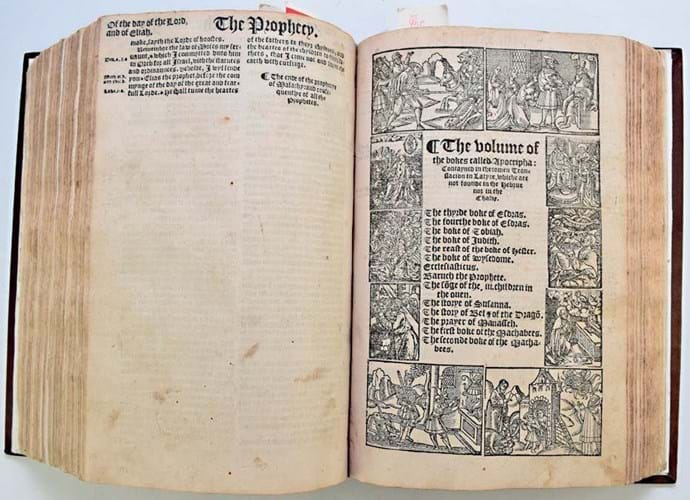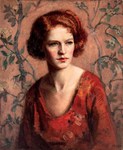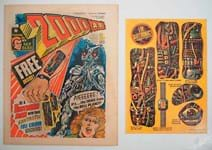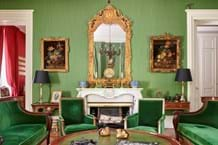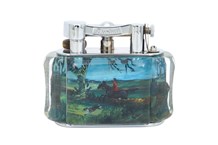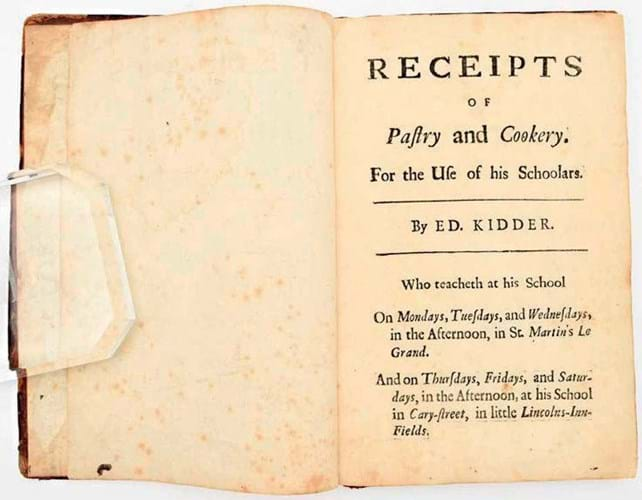
Manuscript version of Edward Kidder’s Receipts of Pastry and Cookery For the Use of his Scholars, £3200 at Halls.
The Cheapside chef Edward Kidder (1665-1739) takes his place in English culinary history as the first known proprietor of a cookery school.
According to his book Receipts of Pastry and Cookery For the Use of his Scholars, he “teacheth at his school on Mondays, Tuesdays and Wednesdays, in the afternoon, in St Martin’s Le Grand. And on Thursdays, Fridays and Saturdays, in the afternoon, at his school in Cary- Street, in Lincoln’s-Inn-Fields.” His recipe for puff pastry is also the first in print.
Receipts of Pastry and Cookery… is discussed at length by Eric Quayle in Old Cook Books, An Illustrated History (1978) where it is described as “much sought-after” and “undoubtedly, one of the most interesting of the pre- 1750 cook books”.
It is primarily known as a printed work of 43 pages with a frontispiece showing a portrait of Kidder in a full wig and period attire, but it is also occasionally found in manuscript form. It is thought these copies were dictated to students but as a number of survivors share the same handwriting it could be they were created by a clerk or by Kidder himself.

Manuscript version of Edward Kidder’s Receipts of Pastry and Cookery For the Use of his Scholars, £3200 at Halls.
One of these enigmatic handwritten versions dated to c.1725 sold for £3200 (estimate £1000-1500) at Halls (24% buyer’s premium) on March 20.
Housed in contemporary panelled sheep (the boards now detached), it features a letterpress title page followed by 70 pages of handwritten recipes.
Halls books specialist Chris Moore pointed to its remarkable similarity to examples in two US collage library collections (the University of Pennsylvania and the University of Iowa) that are available to view online.
London laid out
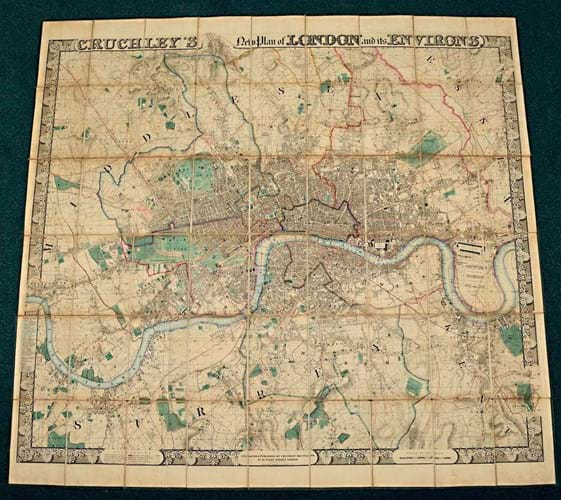
Cruchley’s New Plan of London, new edition improved to January 1843 including its original slip case, £1600 at Halls.
A copy of one of the largest of Cruchley’s famous plans of London sold above the top estimate at £1600.
These were issued in many variants by the London book and map seller George Frederick Crutchley (1797-1880) from 1827 with this copy, ‘improved to January 1st 1843’, a near square format measuring 4ft x 4ft 5in (1.21 x 1.34m) that shows the extents from Highgate down to Dulwich and Stratford across to Hammersmith. It includes the proposal for a bridge at Charing Cross.

Cruchley’s New Plan of London, new edition improved to January 1843 including its original slip case, £1600 at Halls.
Mounted on linen, it retained the original green marbled slipcase with a Cruchley’s printed title label to the upper panel.
Bug deal
Leading the Shrewsbury sale at £6500 (estimate £3000-5000) was a 1551 copy of the English Bible as translated by ‘Thomas Matthew’.
First published in 1537, the year after the dissolution of the monasteries, it is sometimes known as the ‘Bug’ Bible for the passage in Psalm 91 that reads: “So that thou shalt not nede to be afrayed for anye bugges by nyghte.” The word ‘terror’ replaced ‘bugges’ in later versions.
Thomas Matthew is taken to be the pseudonym of John Rogers. A friend and intimate of William Tyndale, he was burnt at the stake for heresy under Mary I in 1555.
As the price implies this was a copy with defects. A total of 48 leaves were provided in facsimile including all of the first 36 pages, meaning the 16th century text begins at the end of Genesis 31.


